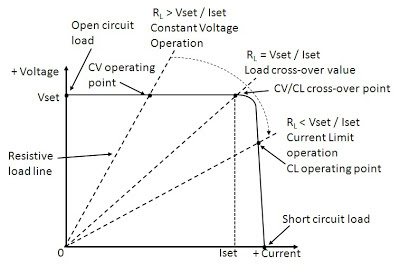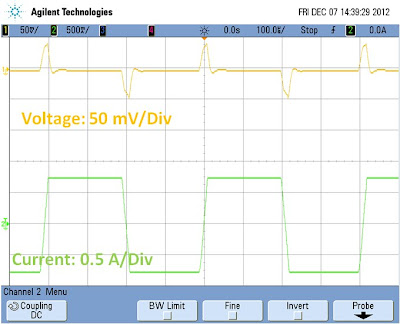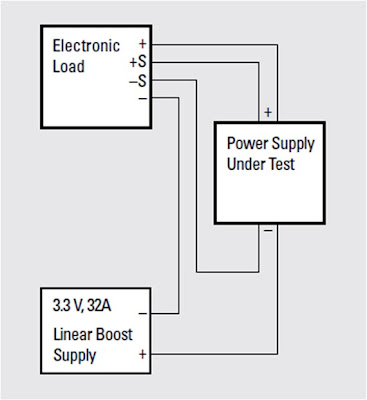In a previous posting; “How Does a Power Supply regulate
It’s Output Voltage and Current?” I showed how feedback loops are used to
control a DC power supply’s output voltage and current. Feedback is phenomenally helpful in providing a
DC power supply with near-ideal performance. It is the reason why load regulation
is measured in 100ths of a percent. A major reason for this is it bestows the
power supply, if a voltage source, with near zero impedance, or as a current
source, with high output impedance. How does it do this?
The impedance of a typical DC power supply’s output stage
(like the conceptual one illustrated in the above referenced posting) is
usually on the order of an ohm to a couple of ohms. This is the open-loop
output impedance; i.e. the output impedance before any feedback is applied
around the output. If no feedback were applied we would not have
anywhere near the load regulation we actually get. However, when the control
amplifier provides negative feedback to correct for changes in output when a
load is applied, the performance is transformed by the ratio of 1 + T, where T
is loop gain of the feedback system. As an example, the output impedance of the
DC power supply operating in constant voltage becomes:
Zout (closed loop) = Zout (open
loop) / (1+T)
The loop gain T is approximately the gain of the
operational amplifier times the attenuation of the voltage divider network. In practical
feedback control systems the gain of the amplifier is quite large at and near
DC, possibly as high as 90 dB of gain. This reduces the power supply’s DC and
low frequency output to just milliohms or less, providing near ideal load
regulation performance. Another factor in practical feedback control systems is
the loop gain is rolled off in a controlled manner with increasing frequency in
order to maintain stability. Thus at higher frequency the output impedance of a
DC power supply operating as a voltage source increases towards its open loop
impedance value as the loop gain decreases. This is illustrated in the output
impedance plots in Figure 1, for the Agilent 6643A DC power supply.

Figure 1: Agilent 6643A 35V, 6A system DC power supply
output impedance
As can be seen in Figure 1, for constant voltage
operation, the 6643A DC power supply is just about 1 milliohm at 100 Hz, and
exhibits an inductive output characteristic with increasing frequency as the
loop gain decreases.
As also can be seen in Figure 1, feedback control works
in a similar fashion for constant current operation. While a voltage source
ideally has zero output impedance, a current source ideally has infinite
impedance. For constant current
operation the 6643A DC power supply exhibits 10 ohms impedance at 100 Hz and
rolls off in a capacitive fashion as frequency increases. However, for the
6643A, it is not so much the constant current control loop gain dropping off
with frequency but the output filter capacitance dominating the output
impedance. While the 6643A can be used as an excellent, well-regulated current
source (see posting: “Can a standard DC power supply be used as current source?”)
it is first and foremost optimized for being a voltage source. Some output
capacitance serves towards that end.
An example of one use for the output impedance plots of a
DC power supply is to estimate what the amount of load-induced AC ripple might
be, based on the frequency and amplitude of the current being drawn by the
load, when powered by power supply operating in constant voltage.



















